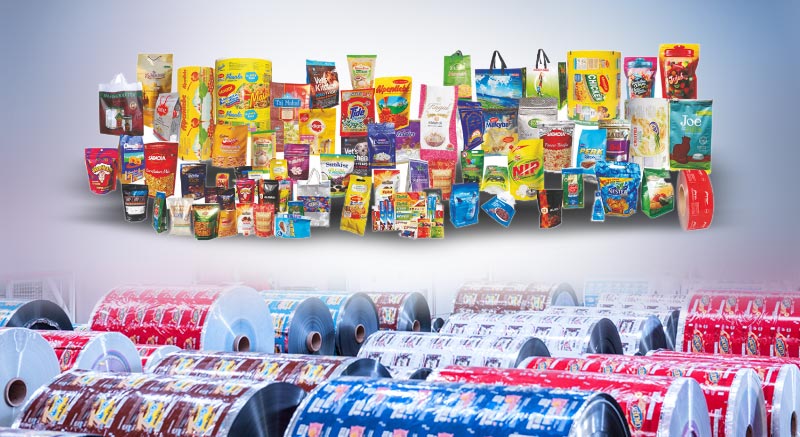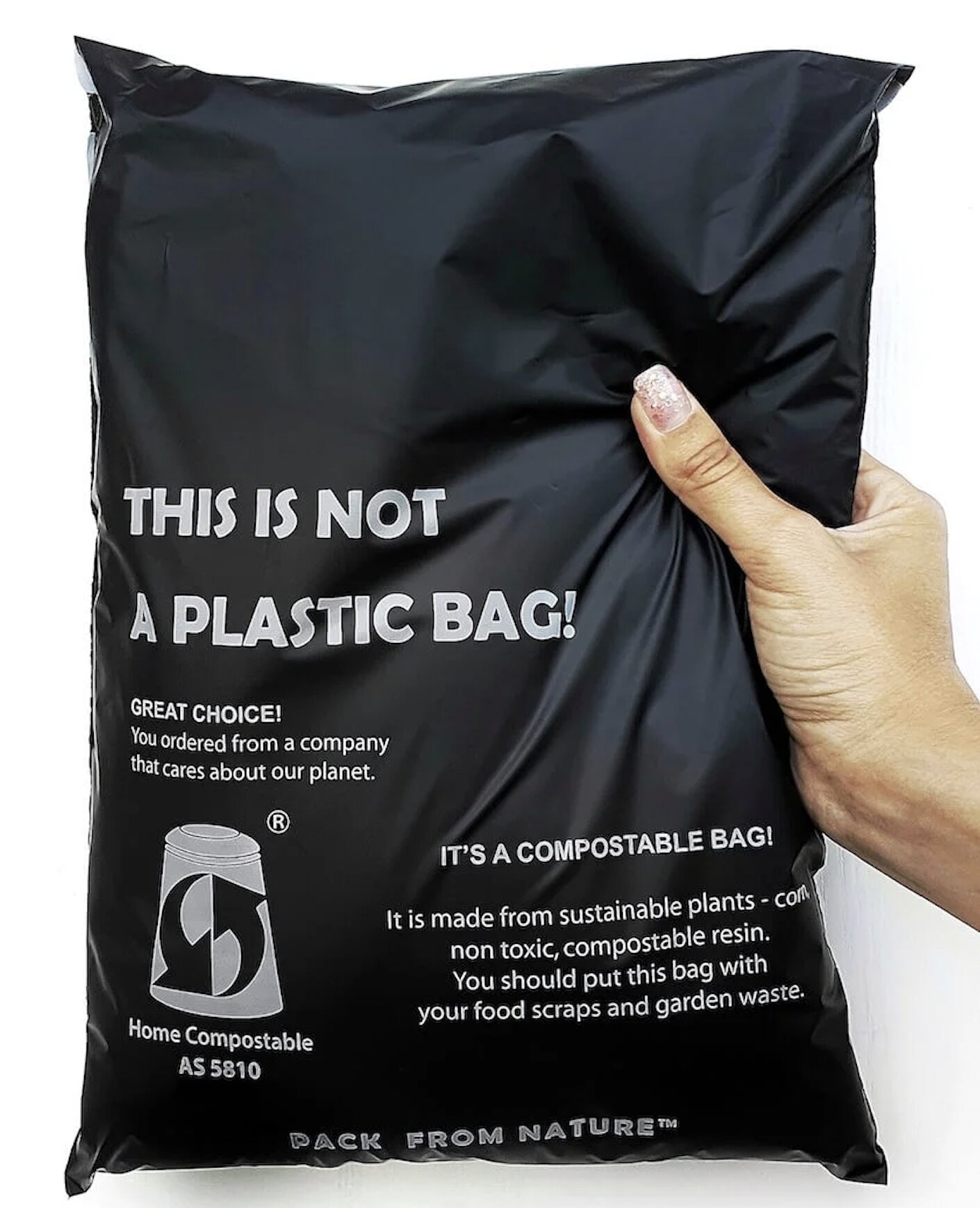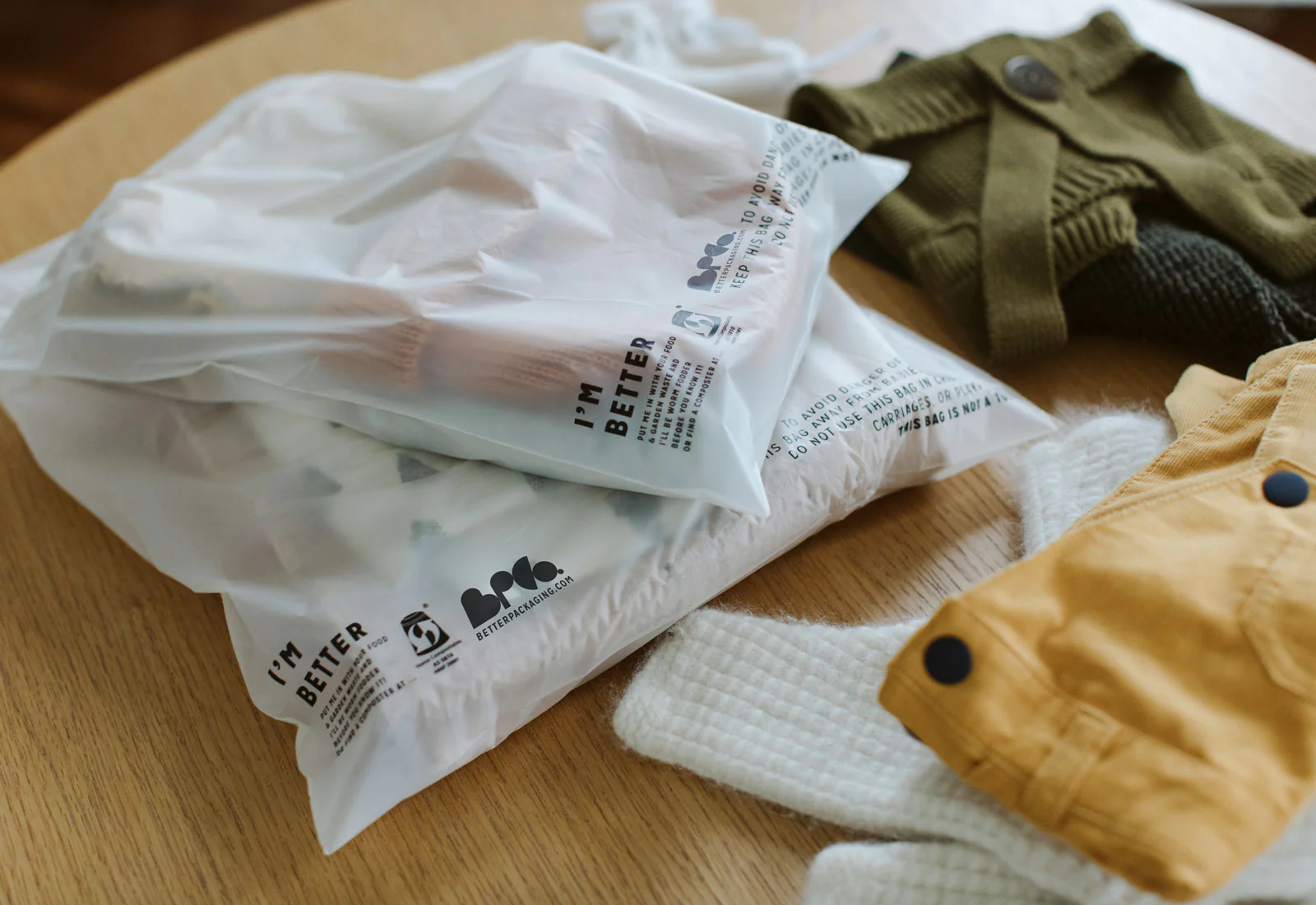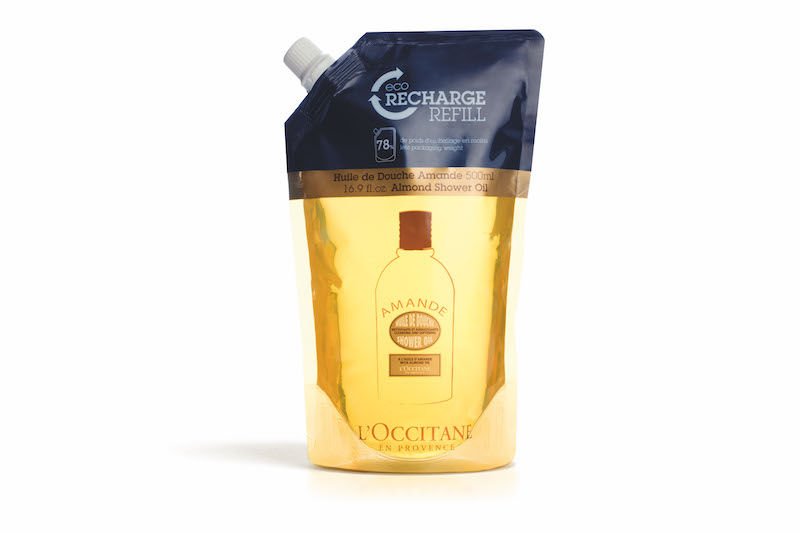The world is changing, and so are consumer expectations. Businesses, big and small, are increasingly recognizing the need to shift towards more sustainable practices, and packaging is front and center in this evolution. Choosing eco-friendly packaging is no longer just a trend; it’s becoming a necessity for brands looking to connect with environmentally conscious consumers, reduce their environmental impact, and contribute to a healthier planet. This article delves into the world of sustainable packaging solutions, exploring various eco-friendly packaging materials, their benefits, and how your brand can make informed choices. Understanding these materials to help build a better future is crucial, and we’ll guide you through the options, from recyclable and compostable choices to innovative biodegradable alternatives, ensuring you find the right packaging for your needs.
What Exactly Does Eco-Friendly Packaging Refer To?
Eco-friendly packaging refers to packaging solutions designed to minimize environmental impact throughout their lifecycle – from sourcing raw materials to production, transportation, use, and end-of-life disposal. It encompasses a broad range of sustainable materials and practices aimed at reducing waste, conserving resources, and lowering the overall carbon footprint. This contrasts sharply with conventional packaging, which often relies heavily on virgin plastics and materials that persist in the environment for hundreds of years. The goal is to move away from a linear "take-make-dispose" model towards a more circular approach where materials are kept in use for as long as possible.

Key characteristics often define eco-friendly packaging:
- Reduced Material Use: Using less packaging material overall.
- Recycled Content: Packaging made from recycled materials (like recycled paper or plastics).
- Recyclability: Designed to be easily sorted and processed through existing recycle infrastructure.
- Biodegradability/Compostability: Materials that break down naturally under specific conditions (biodegradable packaging or compostable packaging).
- Reusability: Packaging designed for multiple uses (reusable packaging).
- Renewable Resources: Sourced from rapidly regenerating plant-based materials (like bamboo or cornstarch).
Ultimately, environmentally friendly packaging aims to create a system where product packaging doesn’t contribute significantly to pollution or resource depletion. For businesses like mine, specializing in flexible packaging from China, offering a diverse selection of eco-friendly packaging options, including pouches made from sustainable materials like PLA or recycled PET, is becoming increasingly important to meet the demands of clients like Mark Thompson in the USA, who are seeking cost-effective yet environmentally responsible solutions.
Why is Switching to Sustainable Packaging Crucial for My Brand?
The decision to adopt sustainable packaging goes far beyond simply "doing the right thing" for the environment; it’s a strategic move with tangible benefits for your brand. Firstly, consumer demand for environmentally friendly products and practices is skyrocketing. Appealing to environmentally conscious consumers can significantly enhance your brand image, build loyalty, and differentiate you from competitors. When customers see your commitment reflected in your eco-friendly packaging, it fosters trust and positive associations. Think about it – if a customer like Mark Thompson is choosing between two similar products, the one with demonstrably sustainable packaging often wins, especially if the quality and price are comparable.
Secondly, incorporating eco-friendly packaging can lead to operational efficiencies and even cost savings in the long run. Lighter-weight materials like films or minimalist designs can reduce shipping costs and the overall carbon footprint associated with transportation. Furthermore, proactive adoption of eco-friendly practices can help businesses stay ahead of tightening environmental regulations regarding packaging waste and single-use plastic. For manufacturers like us, investing in advanced printing on sustainable materials ensures we can provide high-quality, visually appealing eco-friendly packaging solutions that meet both regulatory requirements and brand aesthetics, addressing key concerns like print quality and consistency for procurement managers.
Finally, embracing sustainable packaging aligns your brand with a global movement towards a more sustainable future. It sends a powerful message about your company’s values and commitment to corporate social responsibility. This can attract not only customers but also talent and investment. It’s about future-proofing your business by acknowledging the interconnectedness of commerce and environmental health. Making the switch demonstrates leadership and a forward-thinking approach, ensuring your brand remains relevant and respected in an increasingly eco-aware market. The demand for environmentally responsible products is undeniable, and packaging helps communicate that commitment instantly.
How Do I Navigate the World of Recyclable Packaging?
Navigating recyclable packaging requires understanding what "recyclable" truly means and how the system works. For packaging to be genuinely recyclable, it must meet several criteria: it needs to be made from materials that can be reprocessed, consumers must be able to easily identify it as recyclable and place it in the correct bin, and crucially, there must be an accessible collection and processing infrastructure available to handle that specific packaging material. Just because a material could theoretically be recycled doesn’t mean it will be if the systems aren’t in place or if consumers don’t participate correctly. Common recyclable materials include:
- Paper & Cardboard: Widely recycled (e.g., corrugated boxes, paper packaging, cardboard boxes). Contamination with food or non-recyclable coatings can be an issue.
- Glass: Highly recyclable with no loss of quality.
- Metals: Aluminum and steel are easily and widely recycled.
- Plastics: This is where it gets complex. Different types of plastic (identified by resin codes #1-7) have varying recyclability rates. PET (#1) and HDPE (#2) are the most commonly recycled plastics in many regions. Others, like flexible films or mixed-material pouches, often face significant challenges in standard recycle streams, though specialized programs are emerging.

For businesses, choosing recyclable packaging means selecting materials widely accepted in the target market’s recycle programs (like the USA or Europe for exporters like us). Clear labeling using standardized symbols (like the How2Recycle label in North America) is essential to guide consumers. It’s also vital to avoid designs that hinder recycling, such as inseparable mixed materials or excessive inks and adhesives that contaminate the recycling stream. As a supplier, we work with clients to select appropriate mono-material structures or compatible multi-layer films that maximize recyclability potential, ensuring the packaging solution aligns with their sustainability goals and the realities of recycle infrastructure.
Understanding the limitations is also key. While recycling is a vital part of waste management, it’s not a perfect solution. Energy is still required for collection and reprocessing, and not all materials can be recycled indefinitely (downcycling). Therefore, recyclable packaging should be considered alongside strategies to reduce waste (using less material) and reuse packaging whenever possible. The focus should always be on optimizing the entire packaging lifecycle for the lowest environmental impact.
Are Compostable and Biodegradable Packaging Really the Same Thing?
While often used interchangeably, compostable and biodegradable packaging have distinct meanings and implications for end-of-life management. Understanding the difference is crucial for businesses making claims and for consumers disposing of the packaging correctly. Biodegradable is a broader term, simply meaning a material can be broken down by microorganisms (like bacteria or fungi) over time. However, it doesn’t specify the timeframe, the conditions required (temperature, moisture, oxygen), or what the material breaks down into. Many things are technically biodegradable, including traditional plastic, but it might take hundreds of years and leave behind microplastics or harmful residues.
Compostable packaging, on the other hand, adheres to stricter standards (like ASTM D6400 in the US or EN 13432 in Europe). To be certified compostable, a packaging material must:
- Biodegrade: Break down into carbon dioxide, water, and biomass at a rate consistent with other known compostable materials (typically within 90-180 days).
- Disintegrate: Physically break down so that no large fragments remain after a set period in composting conditions.
- Leave No Toxic Residue: The resulting compost must be non-toxic and able to support plant life.
Essentially, all compostable materials are biodegradable, but not all biodegradable materials are compostable. Compostable packaging is designed specifically to break down in a controlled composting environment – either industrial (high heat, specific microbes) or sometimes home composting (lower temperatures, different conditions). If compostable materials end up in a landfill (lacking oxygen) or the general environment, they may not break down properly and can even release methane, a potent greenhouse gas.

For brands considering these options, it’s vital to choose certified compostable materials if that’s the claim being made and to clearly communicate the appropriate disposal method to consumers (e.g., "Commercially Compostable Only"). Misleading claims about biodegradable packaging can lead to greenwashing accusations and improper disposal. As manufacturers, we offer certified compostable films, often derived from plant-based materials like PLA (polylactic acid), but always emphasize the need for correct end-of-life handling. These options provide a valuable sustainable alternative to plastic for specific applications, particularly in food packaging where contamination makes recycling difficult, but their effectiveness hinges on access to appropriate composting facilities. We can even produce compostable bags tailored to specific needs.
What are the Benefits of Using Recycled Packaging Materials?
Utilizing recycled packaging materials offers significant environmental and economic advantages, making it a cornerstone of sustainable packaging strategies. The most immediate benefit is the conservation of natural resources. By using recycled materials, we reduce the need to extract, transport, and process virgin raw materials like timber, petroleum, or metal ores. This lessens the strain on ecosystems, reduces habitat destruction, and preserves resources for future generations. For example, making paper from recycled paper uses significantly less water and energy than making it from trees.
Another major benefit is waste reduction. Incorporating recycled materials diverts waste from landfills and incinerators. Landfills take up valuable space and can generate leachate and greenhouse gases, while incineration can release air pollutants. Creating demand for recycled materials strengthens the recycle market, encouraging higher collection rates and supporting a more circular economy. When packaging is made from recycled materials, it closes the loop, turning waste into a valuable resource. This is a key selling point for brands wanting to demonstrate tangible eco-friendly practices.
From a business perspective, using recycled materials can also enhance brand image and meet consumer expectations. Many customers actively seek out products made from recycled content. Highlighting this on your packaging signals environmental responsibility and can be a powerful marketing tool. While the cost of recycled materials can sometimes fluctuate based on market conditions, process improvements and economies of scale are making them increasingly competitive with virgin materials. As a supplier, we offer various flexible packaging options incorporating recycled content, ensuring clients like Mark Thompson can access sustainable packaging solutions that don’t compromise on quality or performance, addressing concerns about material durability and print vibrancy even on recycled packaging. This approach helps reduce environmental impact effectively.
Exploring Innovative Eco-Friendly Materials: Beyond Paper and Plastic
The quest for truly sustainable packaging is driving incredible innovation, leading to the development of eco-friendly materials beyond traditional paper, cardboard, and plastic. These alternatives often leverage renewable resources or waste streams, offering unique properties and environmental benefits. One exciting area is packaging derived from agricultural byproducts, such as sugarcane bagasse (the fibrous residue left after juice extraction) or wheat straw. These materials can be molded into containers and trays, offering a compostable alternative for food packaging.

Another category involves bioplastics derived from plant-based materials like corn starch (PLA), algae, or potato starch. PLA, for instance, can be used to create clear films and rigid containers that mimic conventional plastic but are commercially compostable. Seaweed-based materials are also emerging as a promising biodegradable option, particularly for small sachets or edible films, potentially replacing problematic single-use plastic packaging. These innovations represent a significant step towards reducing reliance on fossil fuels for packaging material production. Explore options like flexible containers for skincare.
Furthermore, mushroom packaging (mycelium) offers a fascinating, fully compostable alternative, particularly for protective packaging inserts, replacing polystyrene (packing peanuts). Mycelium, the root structure of fungi, is grown around agricultural waste in custom molds, creating lightweight yet durable shapes. These materials can also be engineered for specific barrier properties or textures, opening up new possibilities for eco-friendly product packaging. As a flexible packaging manufacturer, we continuously monitor these developments, exploring how to integrate novel sustainable materials into pouch formats to provide cutting-edge eco-friendly packaging solutions for businesses aiming to minimize environmental impact.
How Can Businesses Effectively Reuse Packaging?
Implementing reusable packaging systems is a powerful strategy to drastically reduce waste and move towards a truly circular economy. Instead of designing packaging for single use and disposal (even if it’s recycle or compostable), reusable systems focus on durability and multiple life cycles. This can take various forms, from businesses using sturdy, returnable containers for B2B shipments between facilities or suppliers, to consumer-facing refill models where customers bring their own containers or return branded packaging for cleaning and refilling.
For e-commerce businesses, reusable mailers (mailer) offer a compelling alternative to single-use poly bags or cardboard boxes. These durable pouches, often made from recycled plastic or robust fabrics, are designed to be shipped back and forth multiple times. Customers receive their order, then fold the empty mailer and return it via post (often with a pre-paid label). This significantly cuts down on the lot of packaging waste generated by online shopping and offers a tangible demonstration of sustainable practices. We, as suppliers, can design and produce robust pouch solutions suitable for such reusable systems.
Implementing a successful reuse program requires careful planning. Considerations include:
- Durability: The packaging material must withstand multiple trips and handling.
- Logistics: Efficient systems for collection, return, cleaning, and redistribution are essential.
- Cost: Initial investment in durable packaging and reverse logistics systems needs evaluation against long-term savings from reduced single-use packaging supplies.
- Consumer Engagement: Clear instructions and incentives are often needed for consumer participation in return/refill models.
While challenging to implement universally, reusable packaging offers the highest potential for waste reduction and resource conservation compared to single-use options. It represents a fundamental shift in thinking about the purpose of packaging – from a disposable wrapper to a durable asset within a closed-loop system. Consider options like refillable beauty packaging for certain product types.
Is Corrugated Packaging an Eco-Friendly Option?
Corrugated cardboard is often highlighted as an eco-friendly packaging choice, and for good reason, but it’s important to understand its full environmental profile. Its primary advantages lie in its composition and end-of-life potential. Corrugated boxes are typically made from recycled paper fibers (often with a high percentage of post-consumer content) and virgin fibers sourced from sustainably managed forests. This reliance on renewable resources and recycled materials gives it a strong starting point compared to fossil fuel-based plastics.
Furthermore, corrugated packaging boasts one of the highest recycling rates globally. The infrastructure to recycle cardboard boxes are made widely available and efficient in many countries, including key export markets like the USA and Europe. When recycled, the fibers can be used to produce new paper products, contributing effectively to a circular economy. It’s also biodegradable, meaning if it does escape the recycle stream, it will break down naturally over a relatively short period, unlike conventional plastic.
However, it’s not without its environmental considerations. The production of paper and cardboard, even using recycled materials, requires significant amounts of water and energy. Transportation of bulky corrugated boxes also contributes to the carbon footprint. Additionally, coatings, inks, and adhesives applied to corrugated packaging can sometimes hinder recyclability or introduce unwanted chemicals. Therefore, while corrugated is generally a strong eco-friendly packaging option, optimizing its use (right-sizing boxes to avoid void fill), maximizing recycled content, using eco-friendly inks, and ensuring it gets recycled are crucial steps to maximize its sustainability benefits. For shipping products, it remains a popular and often responsible choice, especially when sourced and used thoughtfully.
What Role Does Mushroom Packaging Play in a Sustainable Future?
Mushroom packaging, technically known as mycelium packaging, represents a truly innovative and potentially game-changing approach to sustainable packaging. It utilizes mycelium – the rapidly growing root network of fungi – as a natural binder. The process involves mixing agricultural waste (like hemp hurds or corn stalks) with mycelium spores and placing the mixture into a custom mold. Over a few days in the dark, the mycelium grows, binding the waste particles together and taking the exact shape of the mold. A final heat treatment stops the growth, resulting in a lightweight, rigid, and fully compostable packaging material.
The key environmental benefits are compelling. Mushroom packaging is made from sustainable materials like agricultural waste (upcycling byproducts) and naturally occurring mycelium. It requires minimal energy to produce compared to energy-intensive processes for plastics or even paper. Most importantly, it is 100% home compostable and biodegradable, breaking down in soil within weeks and adding nutrients back to the environment. This offers a stark contrast to expanded polystyrene (EPS or Styrofoam) packing peanuts and inserts, which are bulky, derived from fossil fuels, and notoriously difficult to recycle.
Currently, mushroom packaging is primarily used for protective inserts and custom shapes to cushion fragile products during packaging and shipping, directly competing with EPS. While its application in flexible packaging formats is still limited, the underlying principles demonstrate the potential of bio-fabrication. Its success highlights a shift towards using natural processes and waste streams to create high-performance eco-friendly packaging materials. As technology advances, we might see mycelium or similar bio-based materials play an increasing role in various packaging needs, contributing significantly to a circular economy and a sustainable future by offering solutions that are grown, not manufactured from finite resources. It’s a prime example of looking to nature for genuinely environmentally friendly packaging solutions.
How Do I Choose the Right Packaging for My Products and Brand Image?
Selecting the right packaging involves balancing multiple factors: product protection, cost, operational feasibility, brand image, consumer expectations, and environmental impact. Start by analyzing your product’s specific requirements – does it need protection from moisture, oxygen, light, or physical damage? This will narrow down the necessary barrier properties and structural integrity required from the packaging material. For instance, food packaging has stringent safety and preservation needs, while cosmetics might prioritize aesthetics and shelf appeal alongside protection. We offer various options, including high-quality film packaging.
Next, consider your brand identity and target audience. Are you positioning yourself as a luxury brand, an economical choice, or an explicitly eco-friendly leader? The packaging material, design, and printing should reflect this. Using recycled materials, compostable packaging, or minimalist designs can powerfully communicate a commitment to sustainability, resonating with environmentally conscious consumers. Mark Thompson, for example, needs packaging that looks good on the shelf and reflects quality, but also increasingly needs to meet consumer demand for sustainable packaging solutions. High-quality printing on eco-friendly materials is key here. Customization options, like custom packaging or custom boxes, allow brands to create unique experiences.
Finally, evaluate the environmental and logistical aspects. Assess the end-of-life options for the packaging in your target markets – is it easily recyclable, compostable, or reusable? Choose the option with the lowest overall environmental impact that still meets product and brand needs. Factor in costs, including material sourcing, manufacturing, and packaging and shipping solutions. Working closely with a knowledgeable packaging supplier, like our factory in China, is crucial. We can provide expertise on different sustainable materials, printing techniques, pouch styles (from flat bottom pouch to nozzle pouch bags), and help navigate the complexities of eco-friendly packaging options to find the best packaging solution that aligns product protection, brand values, budget, and sustainable practices. Incorporating eco-friendly packaging is a journey, and choosing the right partner makes all the difference.
Key Takeaways:
- Definition: Eco-friendly packaging aims to minimize environmental impact through material choice (recycled, recyclable, compostable, biodegradable, reusable, renewable) and design.
- Brand Benefits: Switching enhances brand image, meets consumer demand, can offer cost savings, and prepares businesses to adopt future regulations.
- Recycling: Requires materials that can be recycled and accessible infrastructure. Clear labeling is vital. Recycle whenever possible.
- Compostable vs. Biodegradable: Compostable meets stricter standards for breakdown in specific composting environments. Not all biodegradable items are compostable. Correct disposal is key.
- Recycled Materials: Conserve resources, reduce waste, strengthen the recycle market, and appeal to consumers.
- Innovation: Look beyond paper and plastic to materials from agricultural waste, plant-based materials (bioplastics), seaweed, and mushroom packaging.
- Reuse: Offers significant waste reduction potential through durable packaging designed for multiple cycles (e.g., reusable boxes, refill models, reusable mailers).
- Corrugated: Generally a good choice due to high recycled content and recyclability, but consider production impacts and ensure proper recycling.
- Choosing Wisely: Balance product needs, brand goals, cost, logistics, and the actual end-of-life scenario in target markets. Partner with knowledgeable suppliers.
Adopting friendly packaging materials is a critical step towards a more sustainable and responsible business model.
Post time: 03-26-2025

